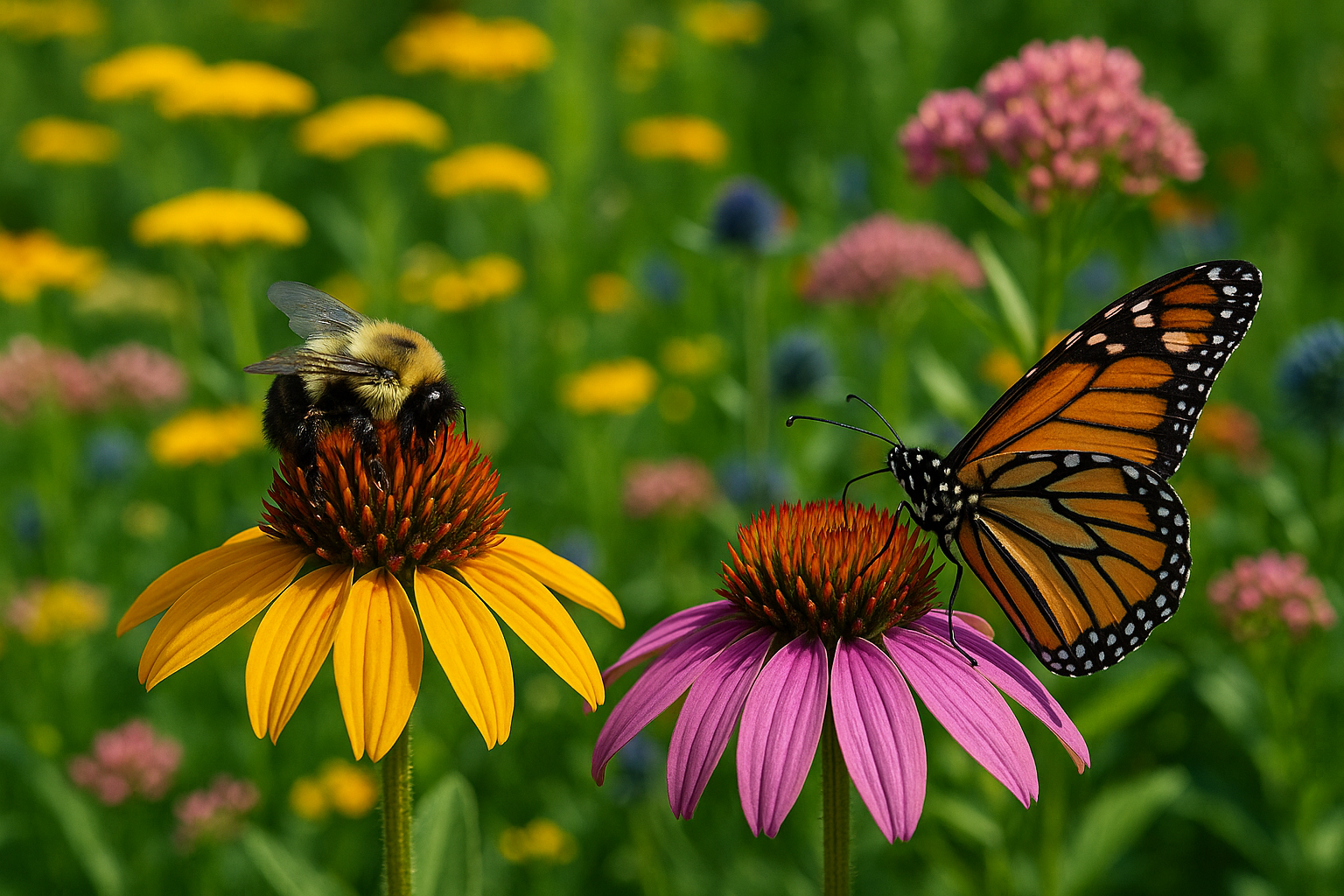A buzzing, fluttering garden isn’t just beautiful — it’s a sign of a healthy ecosystem! Creating a pollinator-friendly garden is one of the most rewarding ways to give back to nature while enjoying a vibrant, colourful outdoor space.
In this guide, you’ll learn how to design a pollinator garden that attracts bees, butterflies, and other helpful insects — no matter your space or skill level!
🌼 Why Create a Pollinator Garden?
Pollinators like bees, butterflies, moths, and hummingbirds play a vital role in fertilizing plants, ensuring your garden thrives, and the global food chain stays intact. Sadly, many pollinator populations are in decline due to habitat loss, pesticide use, and climate change.
A dedicated pollinator garden creates a safe, pesticide-free environment where these essential species can feed, rest, and multiply.
🐝 How to Design a Pollinator Garden: Step-by-Step
1. Choose Native Plants
Native plants are adapted to your local climate and attract the pollinators that naturally live in your region.
- 🌸 Examples: Milkweed, Coneflowers, Bee Balm, Black-eyed Susan, Goldenrod, Lavender.
- 💡 Tip: Aim for a variety of flower shapes, sizes, and colours to support a wider range of species.
2. Plant for Season-Long Blooms
Pollinators need food from early spring through late fall. Choose plants that bloom at different times of the year.
- Spring: Crocus, Lilac, Columbine
- Summer: Coneflowers, Lavender, Bee Balm
- Fall: Goldenrod, Asters, Sedum
This ensures your garden is always a reliable food source.
3. Skip the Pesticides
Pesticides are harmful to pollinators, especially bees and butterflies. If pest control is needed, try:
- Neem oil
- Companion planting
- Hand-picking pests
Organic, chemical-free solutions keep your pollinators safe.
4. Provide Water Sources
Pollinators get thirsty, too! A shallow water source is perfect.
- 🦋 Butterflies love damp sand or shallow dishes with stones.
- 🐝 Bees appreciate shallow trays filled with clean water and pebbles for landing.
5. Create Shelter
Pollinators need places to rest, hide, and nest.
- Leave some leaf litter or hollow stems in your garden.
- Add a bee hotel or a butterfly house for extra habitat.
6. Group Plants Together
Planting in clusters rather than single plants makes it easier for pollinators to locate their food.
- Group 3–5 of the same plant species together.
- This creates visual “landing zones” for bees and butterflies.
🌿 Bonus Tips for a Thriving Pollinator Garden
- Avoid hybrid or double-flowered plants — they often produce less nectar.
- Add host plants for caterpillars, such as milkweed for monarch butterflies.
- Limit lawn space — replace grass patches with wildflowers where possible.
💡 Final Thoughts
Designing a pollinator garden is a simple yet powerful way to support biodiversity while adding natural beauty to your space. Whether you have a sprawling yard, a cozy balcony, or a corner plot, you can create a safe haven for bees, butterflies, and other essential pollinators.
Your garden can be more than pretty — it can be a pollinator paradise! 🌸🦋🐝






